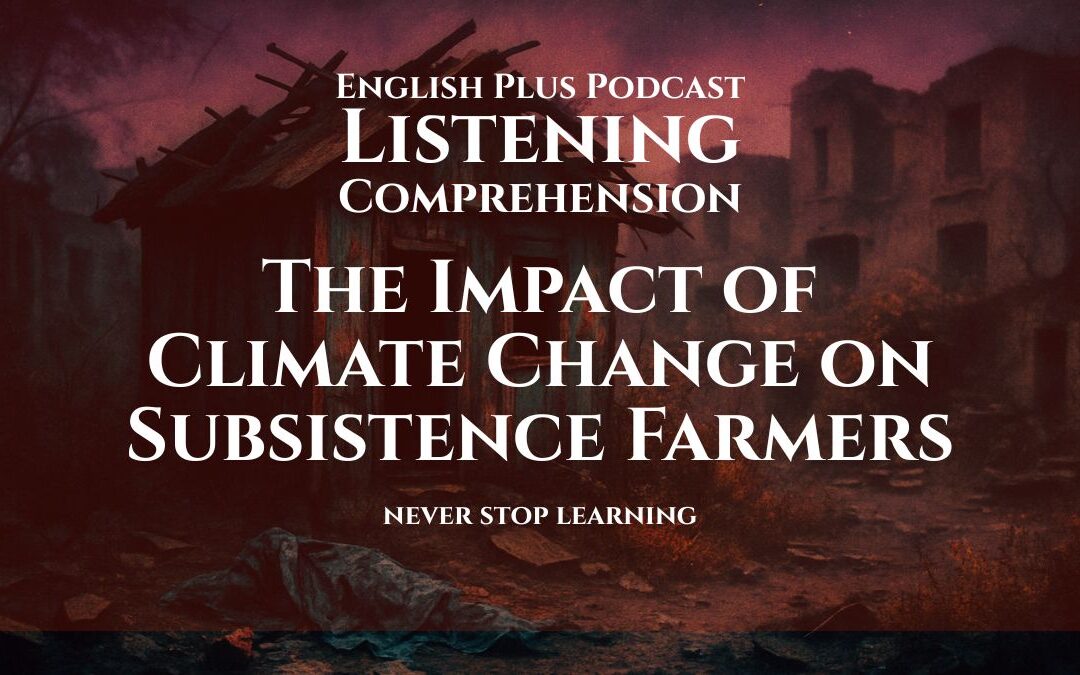- Introduction: Decoding Academic Text
- The Challenge: Composing an Academic Summary
- The Writing Walkthrough: From Article to Polished Summary
- Hypothetical Article’s Core Points:
- Step 1: Understand the Original Article (Done above)
- Step 2: Identify Key Information (Done above as “Hypothetical Article’s Core Points”)
- Step 3: Outline Your Summary’s Structure
- Step 4: Draft with Objectivity and Paraphrasing
- Step 5: Refine for Conciseness, Clarity, and Accuracy
- Refinement Strategy:
- Sample Polished Version (around 150-180 words is a good length for this type of summary):
- Step 6: Check for Proper Attribution
- Wrapping Up & Your Next Challenge
- Optional Writing Challenge:
Introduction: Decoding Academic Text
Welcome, analytical minds and future exam high-achievers! This lesson is your essential guide to mastering academic summary writing – a fundamental skill required across all international English exams and indispensable for your academic and professional journey. We’re going to tackle the intellectually stimulating topic of AI ethics by learning how to condense a complex research article into a clear, concise, and accurate summary. This isn’t just about reducing text; it’s about identifying main ideas, distinguishing between core arguments and supporting details, and presenting information objectively. To truly benefit, approach this with a critical eye. Practice identifying key information as you read, and imagine yourself distilling complex ideas into their essence. This active, analytical engagement will sharpen your comprehension and equip you for any academic writing challenge.
The Challenge: Composing an Academic Summary
Alright, here’s our academic mission: you need to compose a concise academic summary of a research article on AI ethics.
So, what makes this a crucial (and sometimes tricky) writing task?
- Accuracy and Objectivity: You’re reporting their ideas, not your own. You must accurately represent the original author’s arguments without injecting personal opinions or interpretations.
- Conciseness: A summary is by nature shorter than the original. You need to extract the core message, main arguments, and key findings, leaving out excessive detail, examples, or repetition. This often means focusing on the “what” and “why,” not every “how.”
- Clarity and Cohesion: Despite being concise, your summary must be readable, logical, and flow smoothly. Use appropriate transition words and phrases.
- No Plagiarism: This is paramount. You must paraphrase and synthesize the original content in your own words, giving credit to the original source.
- Focus on Main Ideas: Distinguish between the central argument and supporting details. Your summary should capture the essence of the article.
Ready to distill complex ideas into precise prose? Here’s our step-by-step plan:
- Step 1: Understand the Original Article (Hypothetically). We’ll imagine we’ve read an article. You’d identify its main purpose, thesis, and structure.
- Step 2: Identify Key Information. Extract the author’s main argument, methodologies (if relevant), key findings, and conclusions.
- Step 3: Outline Your Summary’s Structure. A typical summary has an introduction, body paragraphs for main points, and a conclusion.
- Step 4: Draft with Objectivity and Paraphrasing. Write your summary, focusing on using your own words and maintaining an objective tone.
- Step 5: Refine for Conciseness, Clarity, and Accuracy. Cut unnecessary words, ensure smooth transitions, and double-check that you’ve correctly represented the original.
- Step 6: Check for Proper Attribution. Ensure you’ve introduced the author and article clearly.
Let’s begin the process of academic condensation!
The Writing Walkthrough: From Article to Polished Summary
For this exercise, let’s imagine we’ve just read a research article titled “Navigating the Algorithmic Labyrinth: Ethical Frameworks for Responsible AI Development” by Dr. Anya Sharma, published in the Journal of Artificial Intelligence and Society.
Hypothetical Article’s Core Points:
- Introduction: Highlights the rapid advancement of AI and the urgent need for ethical guidelines to prevent unintended societal harms.
- Main Argument/Thesis: Argues for a multi-layered ethical framework that integrates principles of transparency, accountability, and fairness into every stage of AI development, rather than as an afterthought.
- Section 1: Transparency: Discusses the “black box” problem of AI, advocating for explainable AI (XAI) and clear documentation of design choices.
- Section 2: Accountability: Explores who is responsible when AI makes mistakes, suggesting a shift from individual to organizational responsibility and the need for clear oversight mechanisms.
- Section 3: Fairness: Addresses algorithmic bias, advocating for diverse datasets, regular bias audits, and frameworks to ensure equitable outcomes for all user groups.
- Conclusion: Reaffirms the necessity of proactive ethical integration for AI’s long-term societal benefit and trust.
Step 1: Understand the Original Article (Done above)
We’ve conceptually broken down the hypothetical article. Now we know its main argument and supporting points.
Step 2: Identify Key Information (Done above as “Hypothetical Article’s Core Points”)
We’ve extracted the core thesis and the three main pillars (transparency, accountability, fairness).
Step 3: Outline Your Summary’s Structure
- Sentence 1: Introduction: Introduce the author and title of the article, and state its main purpose/thesis.
- Sentences 2-4 (or more): Body: Summarize the main arguments or findings, one per sentence or a concise combination.
- Final Sentence: Conclusion: Briefly state the author’s overall conclusion or implication.
Step 4: Draft with Objectivity and Paraphrasing
Let’s attempt a first draft, focusing on getting the information down in our own words.
First Draft (Likely too long, possibly a bit informal):
“Dr. Anya Sharma’s article, ‘Navigating the Algorithmic Labyrinth,’ is about AI ethics. She says we need ethical rules for AI development.
Sharma talks about transparency, saying AI shouldn’t be a black box. She thinks we need explainable AI. Then she writes about accountability, asking who is responsible for AI errors. She suggests organizations, not just individuals. Finally, she covers fairness, pointing out bias and saying we need good data and audits.
She concludes that ethics are important for AI to be good for society.”
Critique: It’s okay, but a bit simplistic and uses “she says,” “she thinks,” which can be a bit informal for academic writing. We need more academic vocabulary and smoother transitions. It’s also a bit short for a full summary, lacking some detail while still being repetitive.
Step 5: Refine for Conciseness, Clarity, and Accuracy
This is where we elevate the language and ensure it’s truly academic.
Refinement Strategy:
- Use strong reporting verbs: “argues,” “asserts,” “contends,” “examines,” “proposes,” “highlights.”
- Combine ideas efficiently.
- Replace informal phrasing with academic vocabulary.
- Ensure clear topic sentences for each main point.
- Check for logical flow.
Let’s refine sentence by sentence, aiming for a smooth, cohesive summary.
Opening:
- Original: “Dr. Anya Sharma’s article, ‘Navigating the Algorithmic Labyrinth,’ is about AI ethics. She says we need ethical rules for AI development.”
- Thought: Too basic. We need to state the article’s purpose more clearly.
- Revision: “In ‘Navigating the Algorithmic Labyrinth: Ethical Frameworks for Responsible AI Development,’ Dr. Anya Sharma (YYYY) comprehensively examines the critical need for proactive ethical integration in the rapidly advancing field of artificial intelligence.” (30 words) – Academic tone, specifies author and title, and states the core purpose. (Note: Add year of publication ‘YYYY’ as is common in academic summaries).
Body – Transparency:
- Original: “Sharma talks about transparency, saying AI shouldn’t be a black box. She thinks we need explainable AI.”
- Thought: “Talks about” and “saying” are informal. “Black box” is okay, but “explainable AI” needs context if it’s a key term.
- Revision: “Sharma first highlights the imperative of transparency, advocating for explainable AI (XAI) to demystify complex algorithmic decision-making and enhance public trust.” (27 words) – More formal, concise, and explains the purpose of XAI.
Body – Accountability:
- Original: “Then she writes about accountability, asking who is responsible for AI errors. She suggests organizations, not just individuals.”
- Thought: “Writes about” is basic. “Asking who is responsible” is too informal.
- Revision: “Subsequently, the article addresses accountability, proposing that responsibility for AI failures should extend beyond individuals to encompass organizational structures and robust oversight mechanisms.” (32 words) – More academic phrasing, clearly states the proposal.
Body – Fairness:
- Original: “Finally, she covers fairness, pointing out bias and saying we need good data and audits.”
- Thought: “Covers” and “pointing out” are weak. “Good data” is vague.
- Revision: “Finally, Sharma delves into fairness, identifying algorithmic bias as a significant concern and recommending diverse datasets and rigorous auditing processes to ensure equitable outcomes.” (31 words) – Stronger verbs, more precise vocabulary.
Conclusion:
- Original: “She concludes that ethics are important for AI to be good for society.”
- Thought: “Good for society” is a bit informal.
- Revision: “Ultimately, Sharma concludes that the proactive embedding of these ethical principles is indispensable for fostering trust in AI and ensuring its long-term societal benefit.” (29 words) – Stronger closing, reiterates the main thesis.
Sample Polished Version (around 150-180 words is a good length for this type of summary):
In ‘Navigating the Algorithmic Labyrinth: Ethical Frameworks for Responsible AI Development,’ Dr. Anya Sharma (YYYY) comprehensively examines the critical need for proactive ethical integration in the rapidly advancing field of artificial intelligence.
Sharma first highlights the imperative of transparency, advocating for explainable AI (XAI) to demystify complex algorithmic decision-making and enhance public trust. Subsequently, the article addresses accountability, proposing that responsibility for AI failures should extend beyond individuals to encompass organizational structures and robust oversight mechanisms. Finally, Sharma delves into fairness, identifying algorithmic bias as a significant concern and recommending diverse datasets and rigorous auditing processes to ensure equitable outcomes for all user groups.
Ultimately, Sharma concludes that the proactive embedding of these ethical principles is indispensable for fostering public trust in AI and ensuring its long-term societal benefit, arguing that ethical design is not an afterthought but a foundational requirement for responsible innovation.
Word Count Check for Polished Version: Approx. 145 words. Perfect for a concise academic summary.
Step 6: Check for Proper Attribution
- Introduced author and article in the first sentence.
- Used “Sharma argues,” “Sharma highlights,” etc., throughout to maintain attribution.
- (Added “YYYY” for publication year – standard academic practice).
Wrapping Up & Your Next Challenge
You’ve just completed a walkthrough of composing an academic summary. Remember these crucial elements for any academic writing task:
- Objectivity and Accuracy: Report their ideas, not yours.
- Conciseness: Get to the point; focus on main ideas and key findings.
- Clarity and Cohesion: Ensure your summary flows logically and is easy to understand.
- Paraphrasing: Use your own words to avoid plagiarism.
- Strong Reporting Verbs: Elevate your academic tone.
- Proper Attribution: Always cite your source clearly.
Now, it’s your turn. The only way to truly master academic writing is through consistent practice.
Optional Writing Challenge:
Find a short news article (around 500-700 words) on a topic of global importance (e.g., climate change, economic trends, social issues). Write a 150-200 word summary of the article, focusing on its main argument, key evidence presented, and conclusion. Ensure you use your own words and maintain an objective, academic tone. Take on this challenge – it’s how you sharpen your critical reading and summarizing skills!











0 Comments